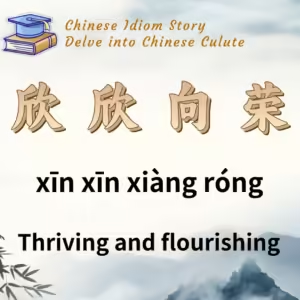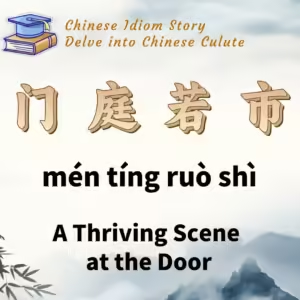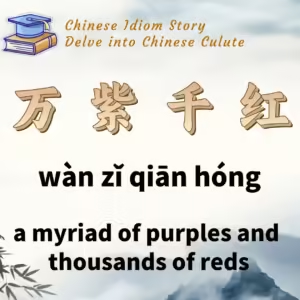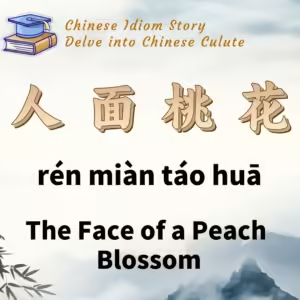
Chinese Idiom: 满园春色 (Man Yuan Chun Se)
English Translation: The Garden is Full of Spring Colors
pīn yīn: mǎn yuán chūn sè
Idiom Meaning: This idiom metaphorically refers to a scene of thriving vitality and flourishing beauty, particularly in spring.
Historical Source: From the poem A Visit to the Garden (《游园不值》) by Ye Shaoweng during the Southern Song Dynasty.
Idiom Story:
During the Southern Song Dynasty, one spring, the poet Ye Shaoweng went out to visit a friend. Upon arriving at his friend’s residence, he found the door closed. He gently knocked, but no one answered after a long wait. Suddenly, he looked up and saw a vibrant branch of red apricot blossoms extending over the wall. This sight reminded him of the abundant spring scenery in the garden, inspiring him to compose poetry. He softly recited the lines that would become his poem A Visit to the Garden, which includes the following four lines:
“Perhaps the host feared that the small teeth of my wooden shoes would leave marks on the green moss in his garden, so I knocked for a long time without anyone coming to open the door. However, the splendid spring colors of the garden cannot be contained; a branch of red apricot flowers has already peeked over the wall.”
In this poem, the poet reflects on the beauty of spring, symbolized by the flowers, and the frustration of being unable to enter the garden. The line “春色满园关不住” (the spring colors cannot be contained) emphasizes that the vitality of spring cannot be hidden, leading to the idiom “满园春色,” which signifies a flourishing and vibrant scene.






